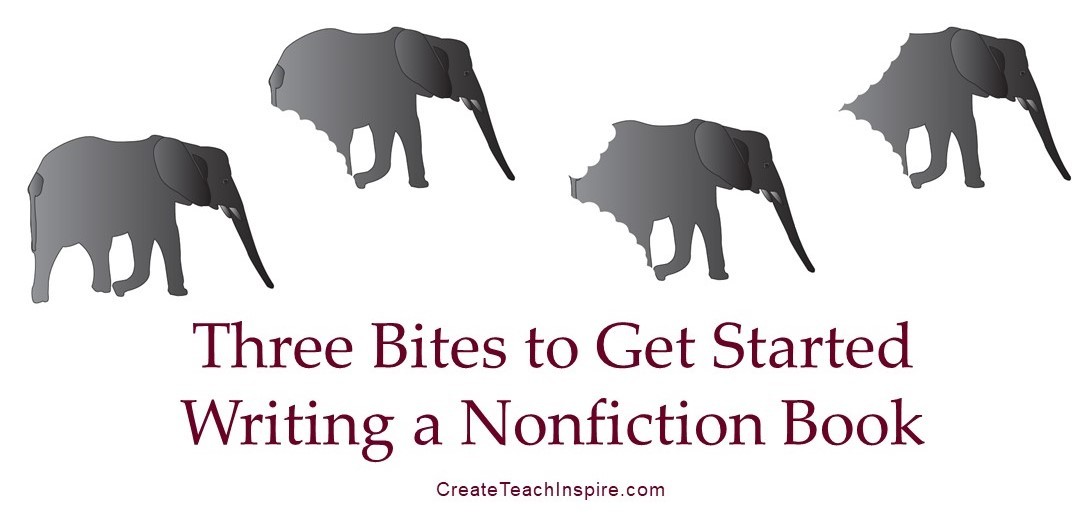Edited transcript of the video:
Do you want to write a book but you just don’t know where to start?
When I talk to people about writing a book, the process seems so overwhelming to them. They may have a great story to tell or a great message to share, but they don’t know where to start.
And face it: You can’t finish if you don’t start.
I’m going to share the process I use for myself and my clients to get started with a nonfiction book. It’s a process that works for just about any nonfiction subject, including business, how-to, self-help, inspiration, personal development—even social or political commentary.
You’ve heard that old saying, “How do you eat an elephant? One bite at a time.”
That’s the best way to approach writing a book.
Your first bite is to identify your primary message.
What do you want to accomplish with your book? What’s the one-line description of your book? This doesn’t need to be a polished marketing message; it’s only for you so that you know what your goal is. Things like the title and jazzy slogans come later.
Your next bite is a brainstorming session to list everything you want to include.
Do this in a way that works for you. Some people can list points in a document file. Some people do it using a spreadsheet. Some people like the visual part of using large whiteboards or even sheets of newsprint that they can tape up on the wall.
I’ve found a great way to do this part of the process is to use old-fashioned index cards. Write each point you want to make on a card. At this stage, don’t be concerned with the order—we’ll get to that. And you don’t need a lot of detail, just enough so that you know what your notes mean.
So you can have idea number one, and maybe a story that illustrates that idea (story number one). Put lessons and takeaways on individual cards. If your book includes explaining processes, you’ll have the various steps on separate cards.
You might want to use different colored cards, maybe putting your key points on one color, illustrations on another, potential pitfalls or warnings on another. You’ll have some cards with major concepts, others with small notes about things you want to be sure you remember to include.
Give yourself plenty of time to do this brainstorming. Do it over several days or even weeks.
Once you’ve written down all the points you want to make, it’s time for bite number three, which is organizing all these cards.
Spread them out so you can see them all. Use a large table or even spread them out on the floor.
You might decide that a particular story and lesson work together, so they’ll be in the same chapter. You’ll notice another point that should go with them, so you move that card. The goal is to put the cards in groups that make sense.
Now you can think about what order you’ll put things in, how you’ll make it flow. What works for chapter one? What’s the best way to end the book? What’s the logical sequence for how you’ll present your information?
As you’re doing this, don’t worry about how many chapters you have or how long your book will be. That doesn’t matter at this point. Your goal for now is to be sure you include everything you need to, and you have it in an order that works.
By the way, notice that index cards are not made of stone. As you get into writing your book, you may think of more things to add, you may decide something you originally included doesn’t work—that’s fine, you can make changes, you can add and subtract as you go along. But you want a strong, clear outline to get started.
So that’s the first three bites of eating the elephant that is writing a book.
- Identify the primary message or purpose of your book.
- Brainstorm and list everything you want to include in the book.
- Organize that information into a viable outline.
And now you’re ready to write.
If you’re thinking about self-publishing, check out my book, The Simple Facts About Self-Publishing. It’s available on Amazon or you can ask your favorite bookstore to get it for you.
- Discovering the Counter-Cultural Jesus - April 12, 2024
- Google Chrome Tip: Navigating Your Tabs - March 15, 2024
- Start a Workplace Book Club - February 14, 2024







Leave A Comment